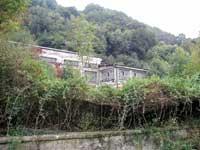Local Agenda 21: step by step

In Euskal Herria, for example, it is clear that urban centres and small towns have little to do, since the structure of society and the problem itself that can exist is also different in each other. Therefore, a small coastal town will probably have more to do with fishing villages that are hundreds of kilometers away than with the capital that is less than ten kilometers away.
All equal
However, although not all peoples follow the same path, similar steps are taken when implementing AL21. In most cases, the process begins with the signing of the Aalborg Charter. Thus, the signatory municipality expresses its commitment to work for sustainability.
Basically five phases can be distinguished: first the process is planned, then the diagnosis is made (the diagnosis reflects the environmental, economic and social situation of the place) and, depending on it, the action plan is defined. From the implementation of the action plan, the final phase, control and follow-up begins.

It should be a process that has no end in itself: as the agreed actions are executed new actions are planned. Thus, while some actions are carried out and they are followed, others are agreed.
In many places the responsibility for Agenda 21 lies with the environment department. Unfortunately, this department does not have enough strength to influence urban planning and territorial planning, so the actions agreed by the citizens remain on paper.
Therefore, a strong commitment is necessary from the beginning to carry out the process. The best results have been obtained through leadership by the mayor's office, a model to be followed by citizens through more sustainable municipal management. In addition, everything seems to indicate that it is the only way to involve all departments of the city council in the same objective.
Voice of the people
Throughout this process the participation of people is fundamental from the beginning. A more participatory democracy is sought, based on consensus. Citizens decide which country they want in the future. In any case, it is not only referred to the people of the street, but also must participate mayors, councilors and workers of the City Council; also an appeal is made to those responsible for the large and small businesses of the municipality; it is advisable that also participate cultural associations, free time groups and other associations that may be present in the municipality.

Although participation can be done in different ways, forums are usually held. Normally it opens up the possibility of participating to the whole citizenship and is directly invited to certain social collectives, especially to guarantee the representativeness of the whole society. In this way it is intended to guarantee not only those who have special interest but also others.
Indicators: measuring tools
The implementation of indicators is key to the continuous improvement of Local Agenda 21. The function of indicators is to a large extent to measure whether evolution towards local sustainability is positive or not. Therefore, they usually depend on the objectives and actions agreed in each municipality. For example, if one of the objectives of an AL21 is to reduce water consumption and decide to conduct a campaign to avoid waste water, the amount of water consumed in the municipality is measured over time to know the impact of the campaign, that is, one of the indicators is water consumption.

Different groups of indicators of support to municipalities have been defined. Among the collections of indicators published in the Basque Country itself are the Environmental Indicators 2002 of the Basque Government and the Local Agenda Indicators 21 of IHOBE. From these collections of indicators, each municipality can choose theirs and adapt to the actions being carried out. In this way you can know if they are closer or farther from being a sustainable people.
Therefore, it is necessary to select appropriate indicators to adjust the course of the continuous process depending on the current situation.
What people, what agendaAlthough Agenda 21 is born from the need to preserve the environment at the local level, it is based on three pillars: environment, economy and society. And you have to work to improve all three. However, depending on the initial situation of each municipality, the agreed actions are usually very different. Imagine that we live in a village in northern Europe. Social issues have long been one of the main objectives of the government, so there is hardly any unemployment and housing is not a problem, but people demand sports and parks for leisure. It is logical that a majority of the budgets of the Agenda go in actions of environmental improvement. Let us now put on the other end. Imagine that we live in a poor neighborhood of Rio de Janeiro. Surely, more than having a park for children to play near home, we will have to have a decent job and housing, and that's why in the Agenda we want to dedicate more money to seek those objectives. Therefore, social actions to improve the quality of life precede environmental improvement. |





